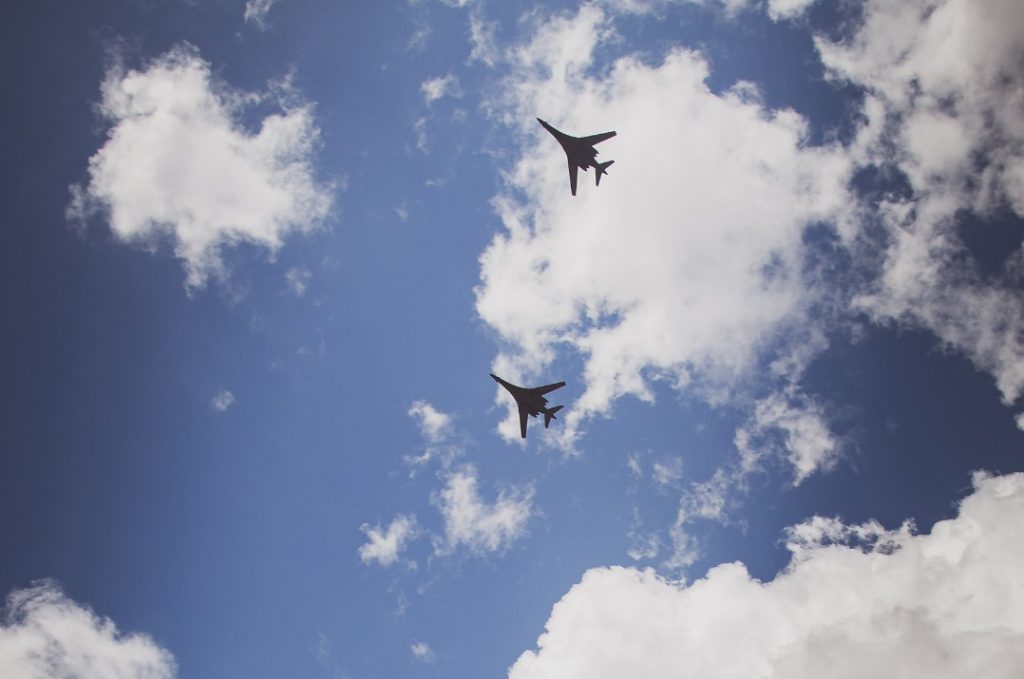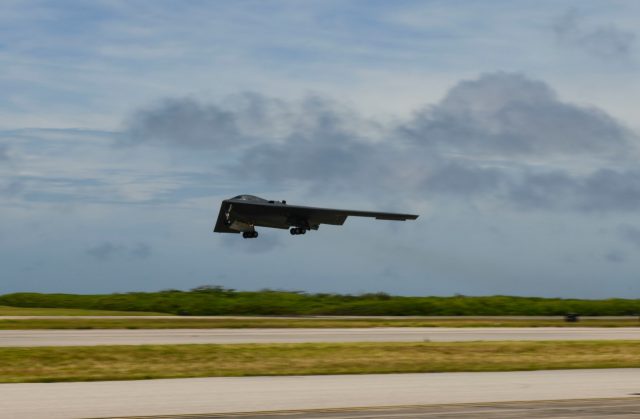US Air Force B-2 Spirit and B-1 Lancer bombers took part in a combined US-Australia exercise in Australia’s Northern Territory last month.
The bombers contributed to the maneuvers by providing long-distance air strikes as part of a combined task force with the Marine Rotational Force-Darwin and Australian Defence Forces (ADF).
B-2s of the 393rd Expeditionary Bomb Squadron (EBS), deployed from Whiteman Air Force Base, Missouri, to Naval Support Facility, Diego Garcia, flew roughly 3,991 miles, or 6,424 km, during multiple sorties to operate over Delamere, Bradshaw and Mount Bundley training areas in Australia. Additionally, a squadron of KC-135s from the 909th Air Refueling Squadron at Kadena Air Base, Japan flew to Darwin, Australia to support the bomber presence.
The exercise focused on a small naval expeditionary force’s ability to rapidly deploy, integrate with allies, coordinate airstrikes and call for close air support on targets within a contested environments.
During this combined exercise, MRF-D and ADF joint terminal air controllers (JTACs) coordinated airstrikes with US Air Force B-1B Lancers deployed to Andersen Air Force Base, Guam, and the B-2s before passing those same aircraft to tactical units to conducting dynamic targeting, which is striking unplanned and unanticipated targets.
Both nations’ JTACs also worked alongside Australian Tiger armed reconnaissance helicopters and US Marine Corps RQ-21A Blackjacks to identify and surveil simulated targets.

“It’s imperative that the US Marine Corps and Australian Army work together,” said Australian Army Sgt. Aaron Costes, a JTAC with 102nd Coral Battery. “It’s such a feat that we can infill and have an aircraft come in from such long distances.”
The 393rd EBS bombers provided air-to-ground low pass coverage while US Marines used both traditional and modern forms of target location and confirmation to call for coordinated, rapid-air strikes, including live munitions dropped on targets in a demonstration of the B-2 Spirit’s precision strike capabilities.
The B-2’s low-observable, or stealth, characteristics gives the bomber the ability to penetrate an enemy’s defenses and threaten heavily defended targets. The B-1B is capable of tracking, targeting and engaging moving vehicles, and the fully integrated data link with Link-16 capability provides improved battlefield situation awareness and security beyond line of sight reach back connectivity.
The training comes on the heels of the 2020 Australia-US Ministerial Consultations in Washington, D.C., between US Secretary of State Mike Pompeo, US Secretary of Defense Mark Esper, Australian Minister for Foreign Affairs Marise Payne and Australian Minister for Defence Linda Reynolds July 28. During the meeting, both governments’ officials reaffirmed both countries commitment to a stable, secure and prosperous Pacific.



























